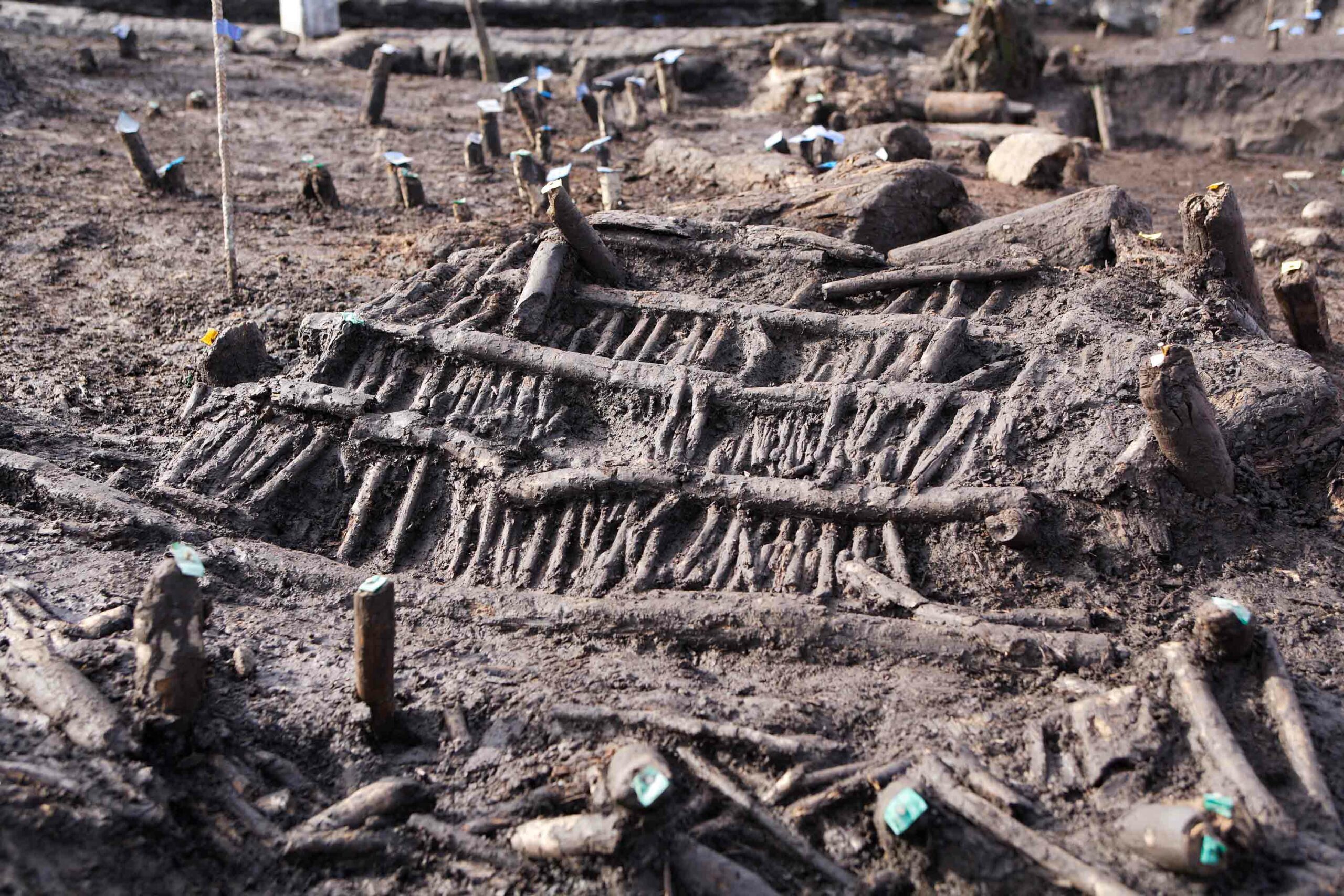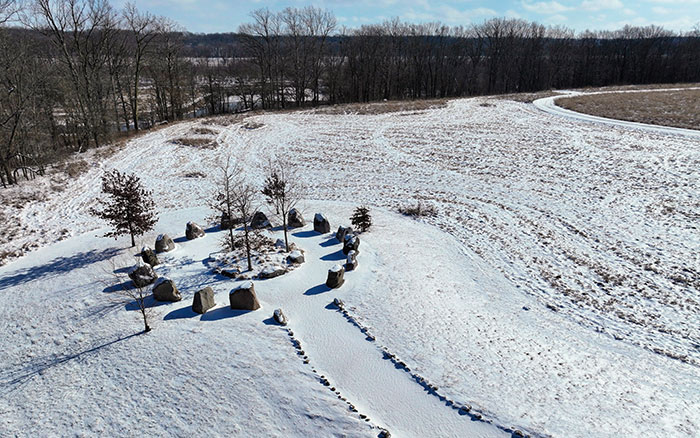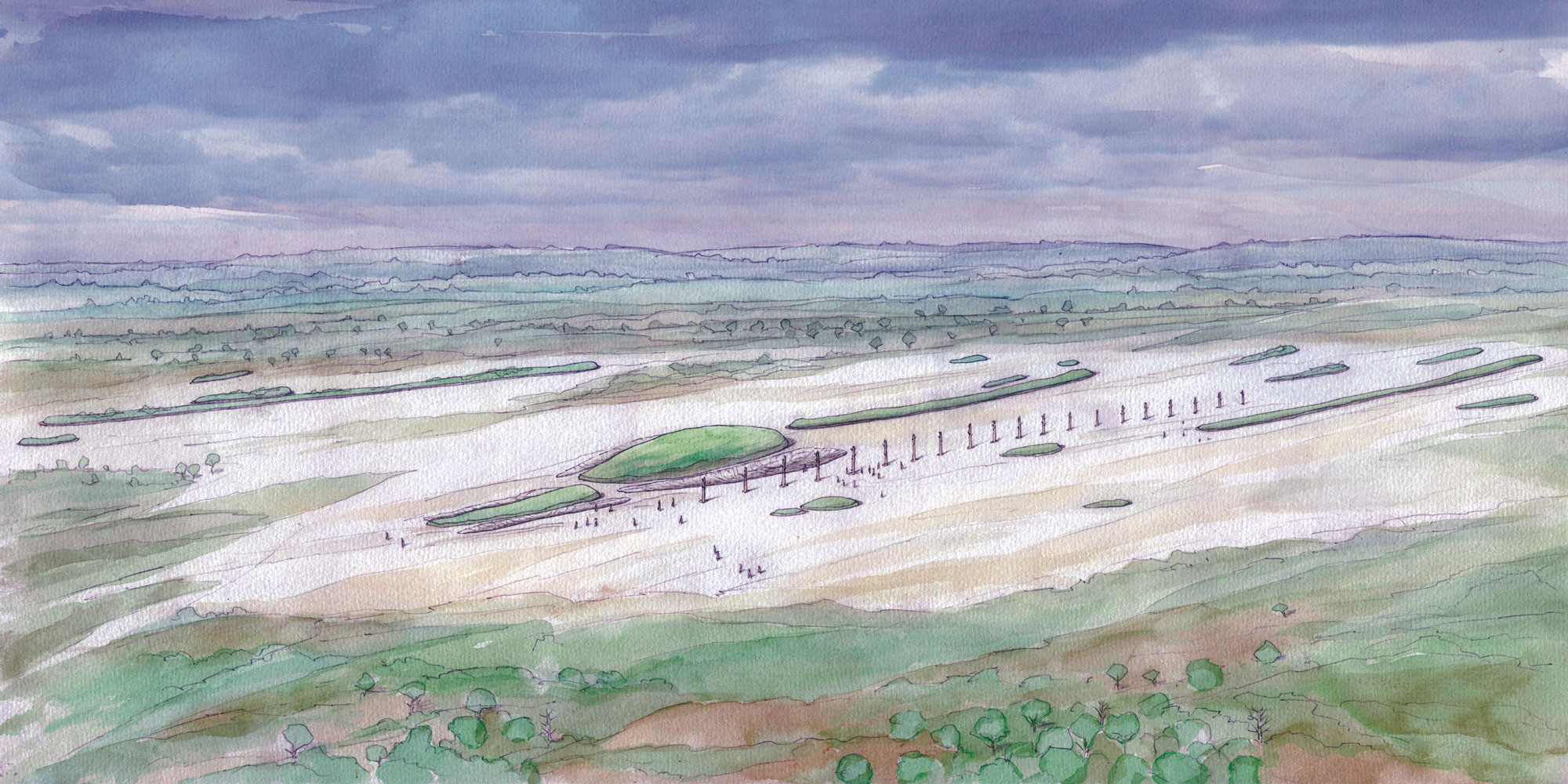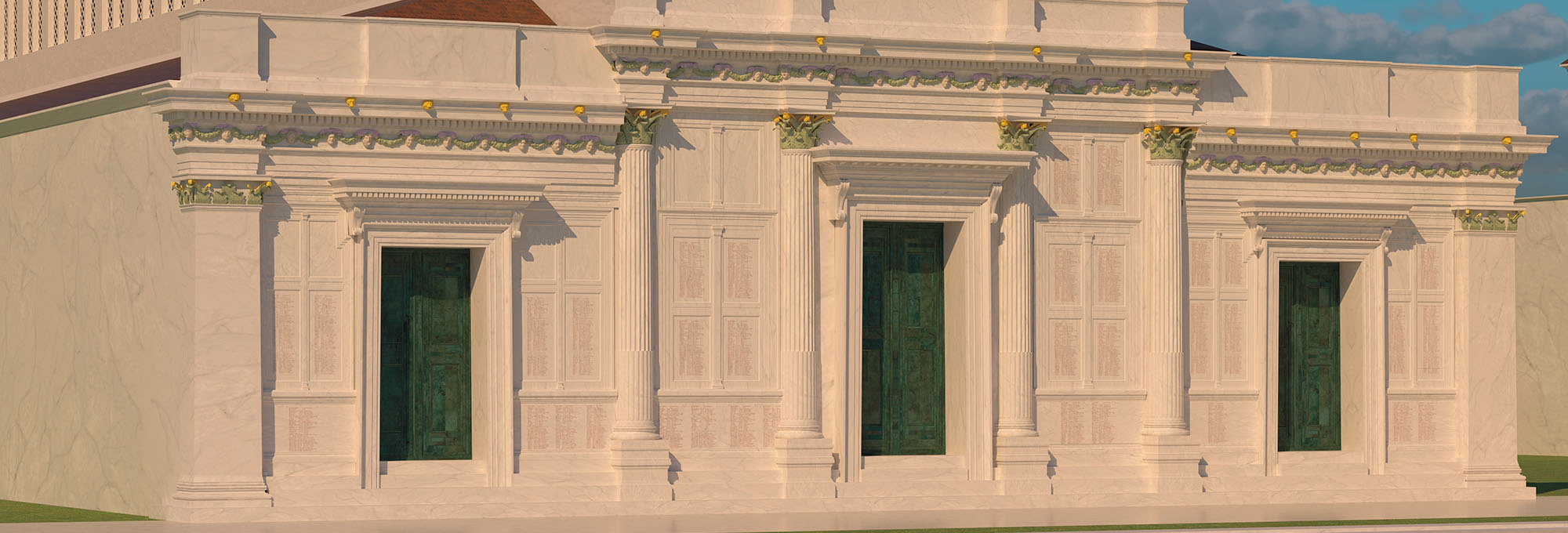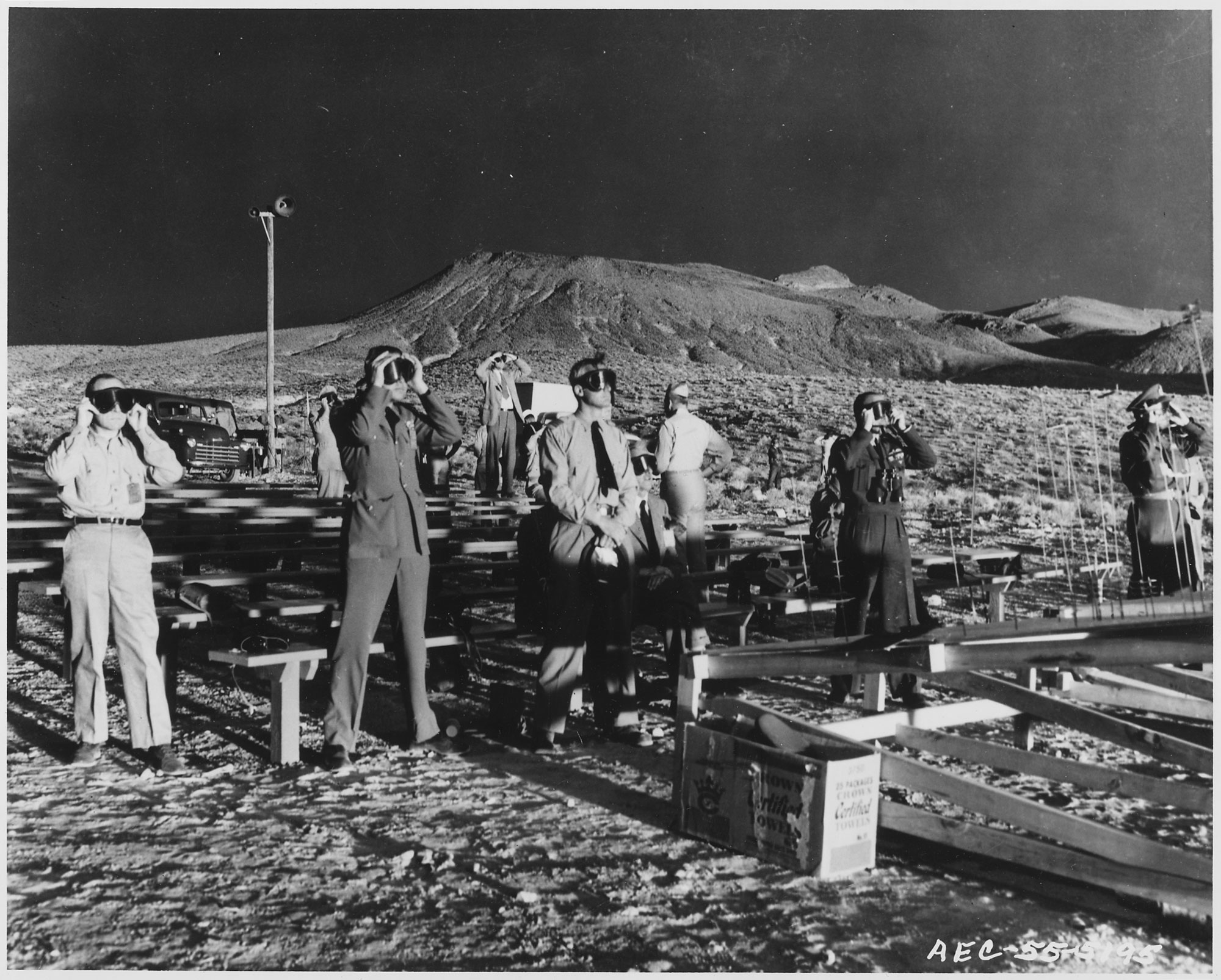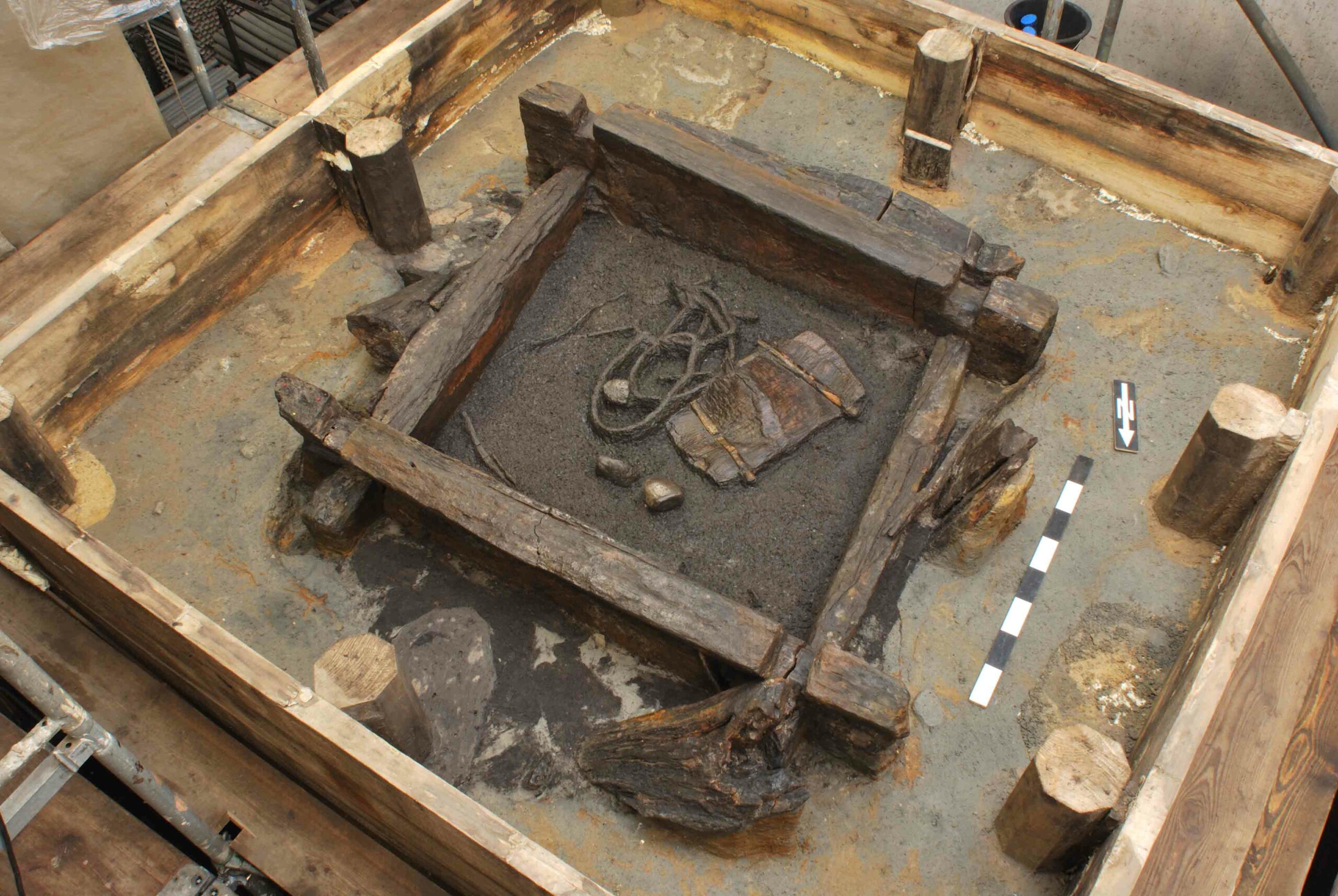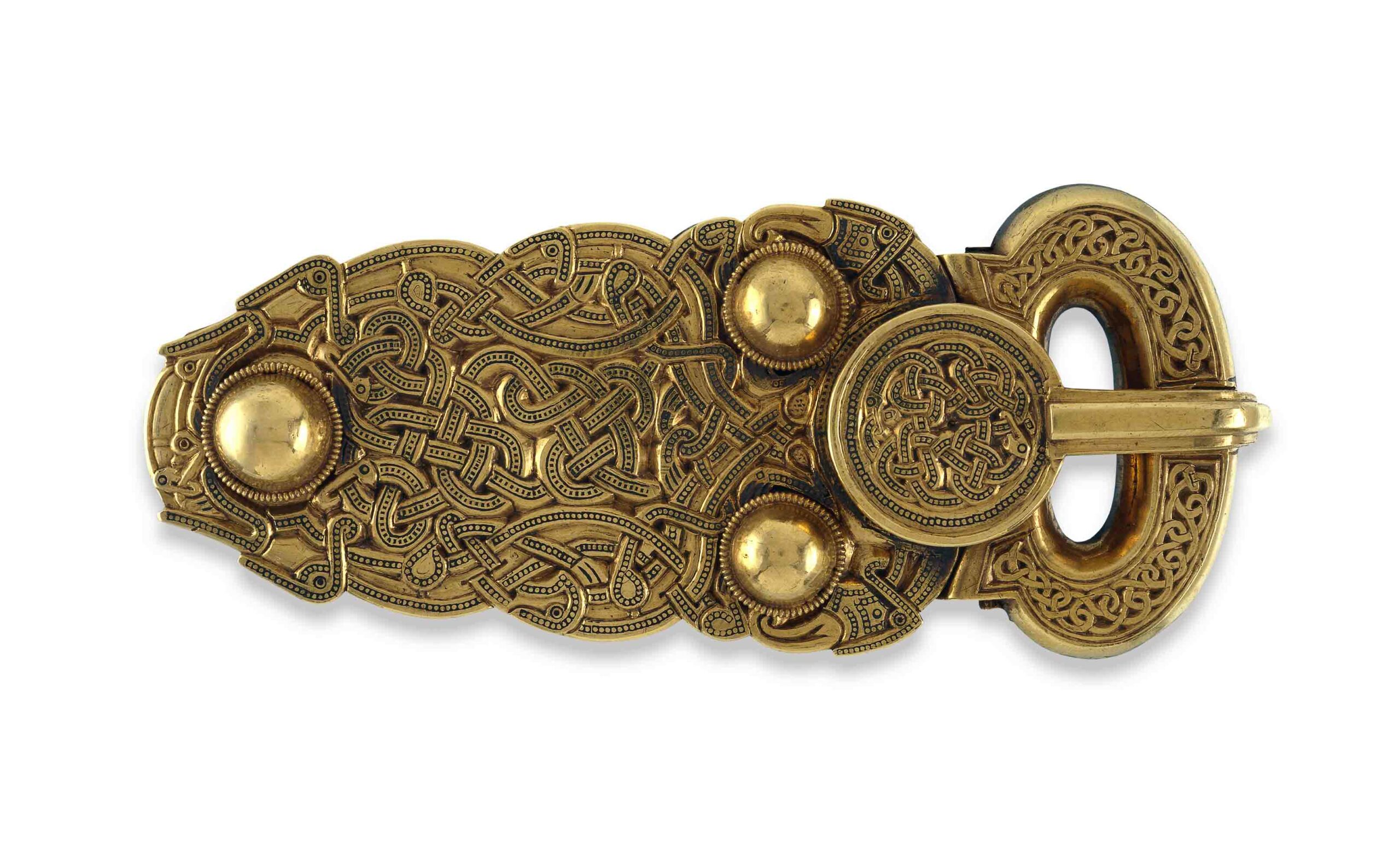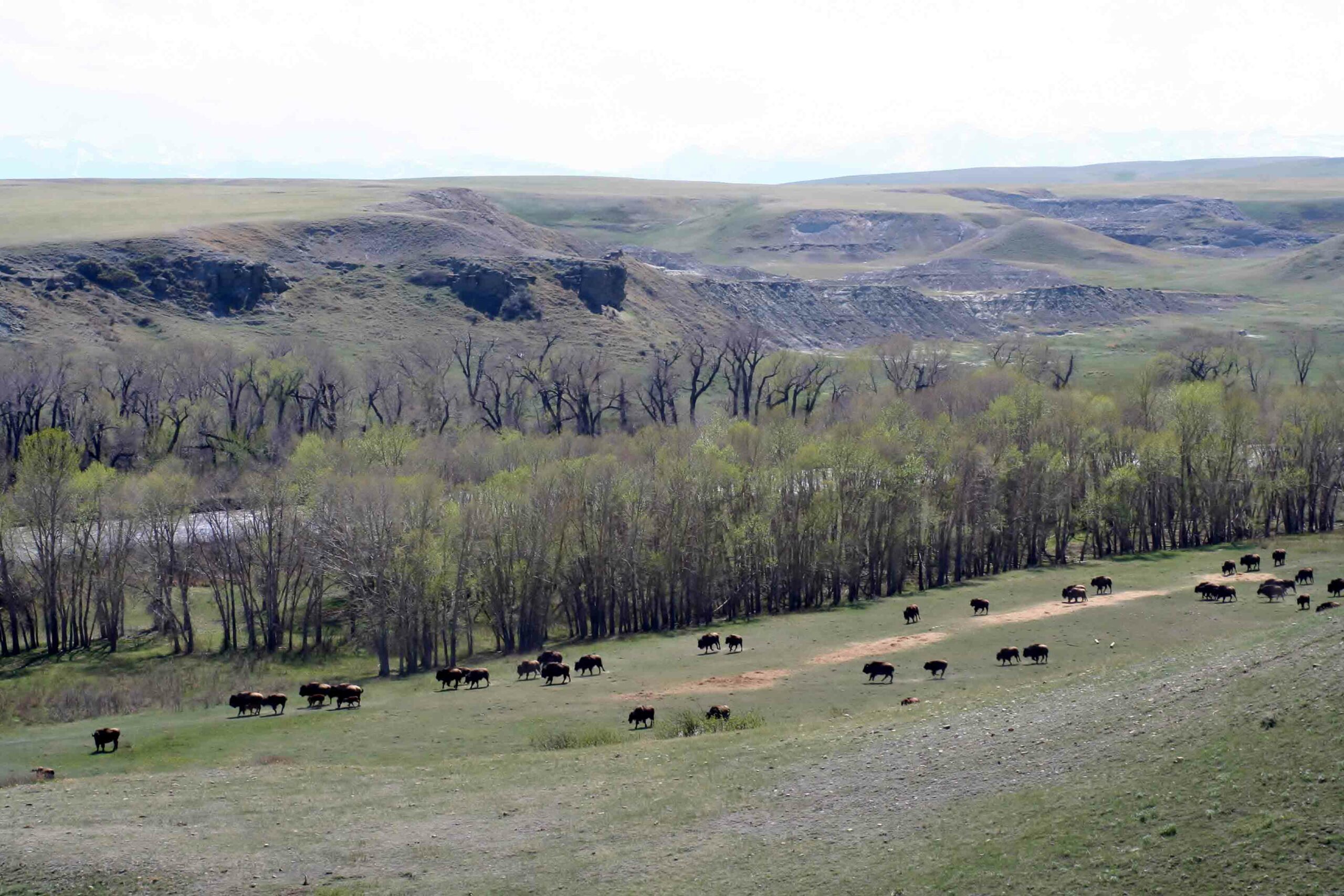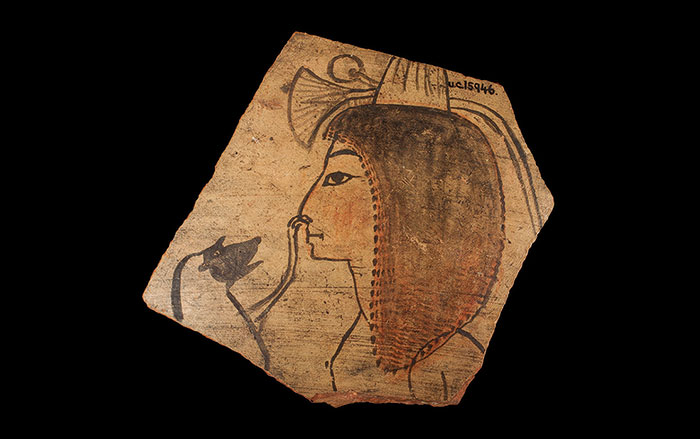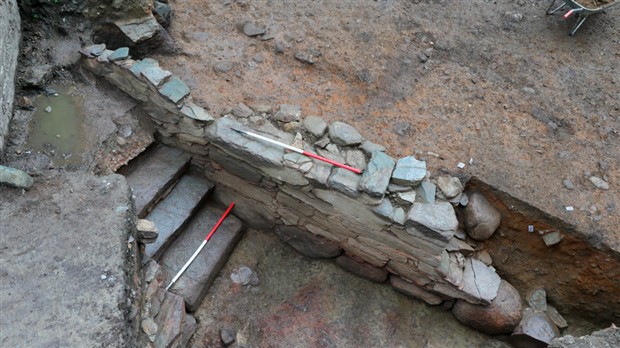
LONDONDERRY, NORTHERN IRELAND—An excavation carried out under a license from the Northern Ireland Environment Agency has uncovered part of a building that is thought to have burned down in 1608, when the town of Derry was sacked by Cahir O’Doherty, whose lands had been confiscated for colonization during the reign of King James I. The timber walls and slate roof of the building collapsed into its stone cellar. Intact glass bottles were found, along with medieval pottery, musket balls, a small cannon ball, and clay pipes. “The building’s alignment is east-west and has been dated to the early 1600s. The east-west alignment is radically different to our present day Walled City street pattern. This clearly shows the building reflects the earlier street pattern based on the ecclesiastical settlement that pre-existed the plantation town of Londonderry,” Environment Minster Mark Durkan said in U TV. Derry’s city walls, which were constructed between 1613 and 1619, are intact. To read about the threat to one of the most important medieval settlements in the British Isles, go to "Saving Northern Ireland's Noble Bog."


